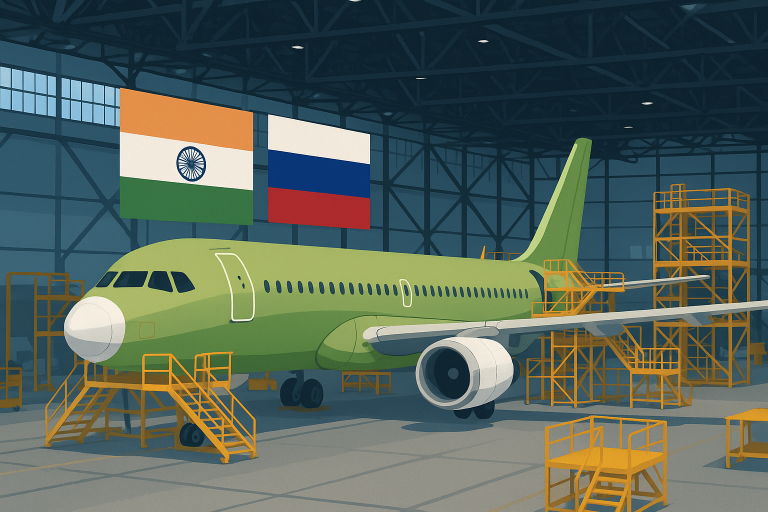India and Russia have signed a major deal to jointly manufacture the SJ-100 passenger aircraft, marking a significant expansion in their long-standing strategic partnership.
The agreement between Hindustan Aeronautics Ltd. (HAL) and Russia’s United Aircraft Corporation (UAC), according to a Bloomberg report, comes just weeks ahead of President Vladimir Putin’s scheduled visit to India in December.
It underlines the resilience of New Delhi-Moscow ties despite increasing Western pressure.
The partnership represents a key milestone in India’s plan to boost domestic aviation manufacturing while expanding short-haul connectivity under Prime Minister Narendra Modi’s “Make in India” initiative.
HAL and UAC to produce SJ-100 passenger aircraft in India
HAL announced on Tuesday that it has signed an accord with UAC for the local manufacturing of the SJ-100 twin-engine, narrow-body passenger aircraft.
While the financial details and technology transfer clauses have not been disclosed, the company confirmed that this will be the first time a complete passenger aircraft is produced in India.
Bloomberg reports that according to HAL, the agreement reflects “mutual trust” between the two aerospace firms and strengthens bilateral cooperation in the civil aviation sector.
The deal gives HAL manufacturing rights for Indian customers, aligning with New Delhi’s objective of reducing import dependence in the aviation industry.
The SJ-100, originally developed by UAC’s Sukhoi division, is designed for regional routes with a capacity of 75–95 passengers.
The partnership aims to localise production and gradually integrate Indian suppliers, creating a new chapter in civil aircraft production in the country.
A strategic partnership amid geopolitical pressure
The announcement comes at a critical juncture in global politics.
Western nations, particularly the United States, have intensified pressure on India to scale back its trade and defence ties with Russia following Moscow’s ongoing conflict in Ukraine.
US President Donald Trump’s administration has repeatedly criticised India for continuing to buy Russian crude oil and recently imposed 50% tariffs on Indian goods, citing trade imbalances and its strategic alignment with Russia.
Despite these challenges, the new aviation pact underscores India’s intent to maintain an independent foreign policy and diversify its industrial partnerships.
It highlights how Moscow and New Delhi are strengthening economic cooperation in sectors beyond defence, at a time when Russia faces sanctions from the West and seeks new markets in Asia.
President Putin’s upcoming visit in December is expected to include discussions on energy cooperation, arms manufacturing, and trade expansion.
The timing of this deal, therefore, sends a clear diplomatic message — that India intends to pursue its long-term strategic interests with both Western and Eastern partners.
Boost to India’s aviation manufacturing and connectivity goals
For India, the collaboration represents a major step forward in its ambition to build a domestic aircraft production ecosystem.
Prime Minister Modi’s vision for the aviation sector includes doubling the number of operational airports to 350 by 2047 and expanding short-haul air connectivity across the country.
The SJ-100 production line could complement this plan by supplying affordable regional aircraft to Indian carriers, potentially easing pressure on imports from Western manufacturers like Airbus and Boeing.
It also fits into the broader national goal of making India a global aerospace manufacturing hub.
HAL, however, faces challenges. The state-run company has previously struggled to meet production targets for its fighter jet programmes, leading to delays that affected India’s Air Force.
Analysts say that scaling up civil aircraft manufacturing will require substantial investment in infrastructure, skilled manpower, and supply chain integration.
HAL has yet to disclose the amount of capital it plans to invest or which airlines have shown interest in the SJ-100 model.
Still, the deal with UAC positions India to enter the competitive regional aircraft market while expanding its aerospace manufacturing footprint.
It marks another step in India’s efforts to balance global alliances while advancing domestic industry capabilities.
The post India moves to build its first passenger jet under new aviation pact with Russia appeared first on Invezz

